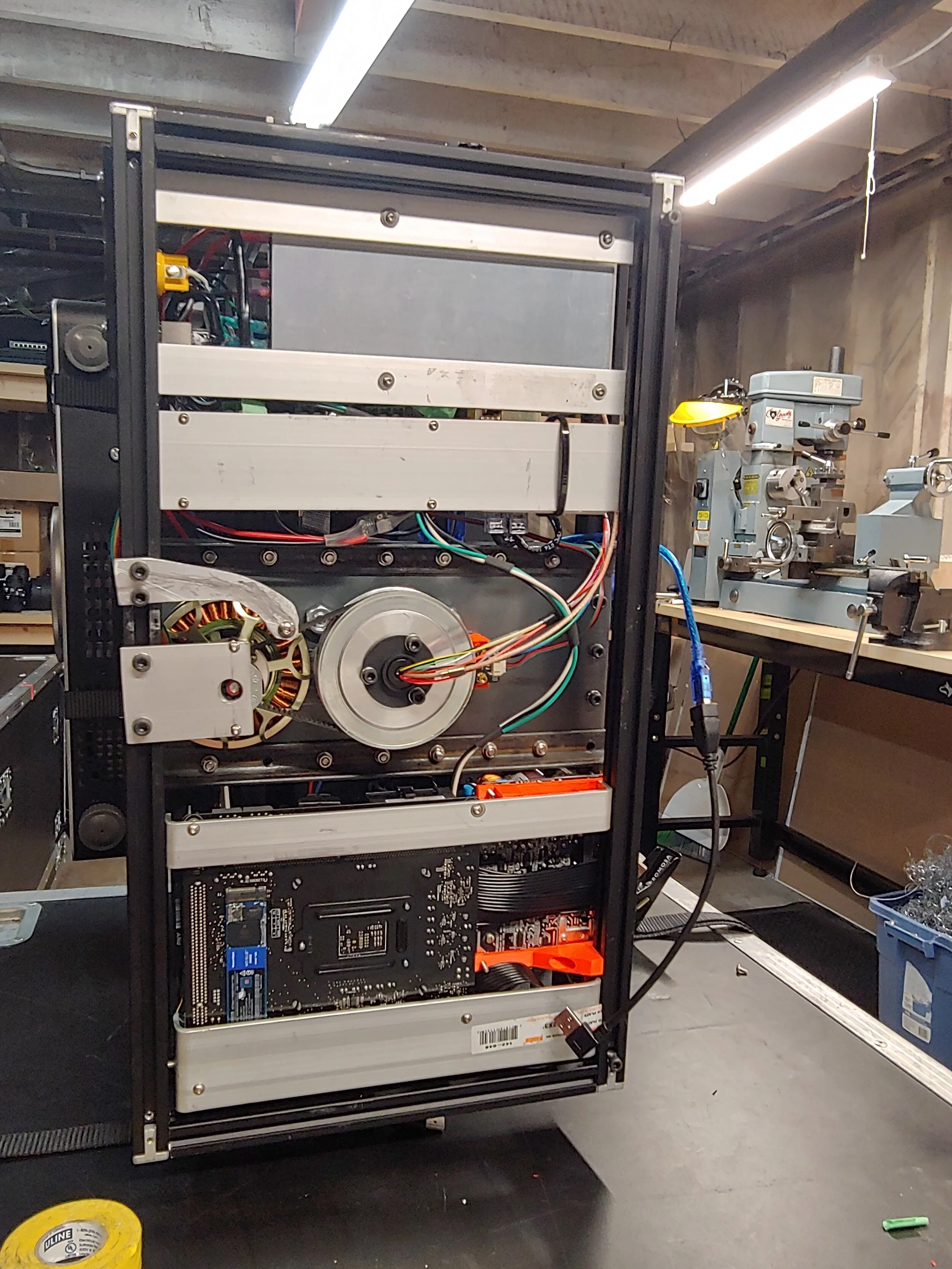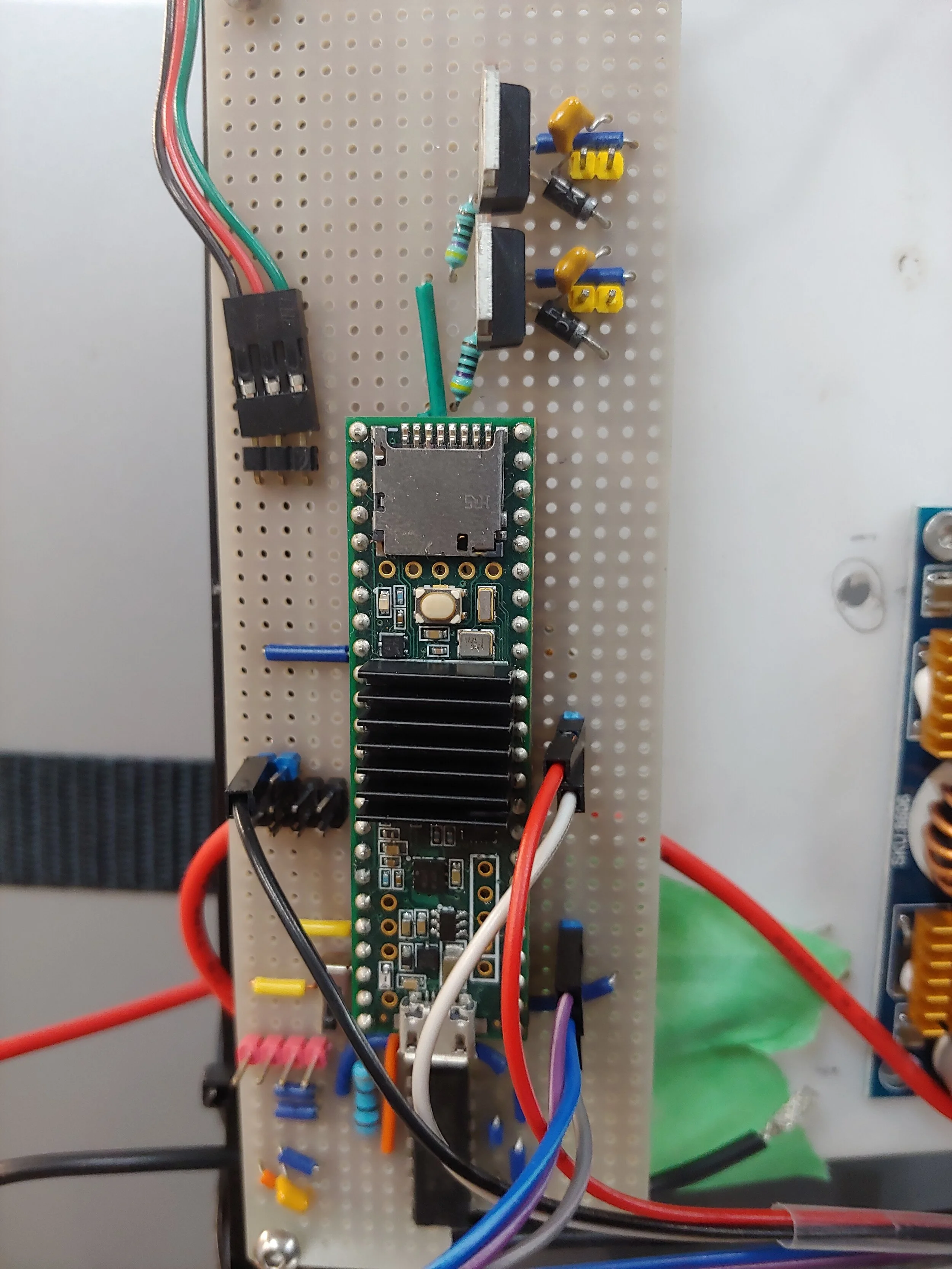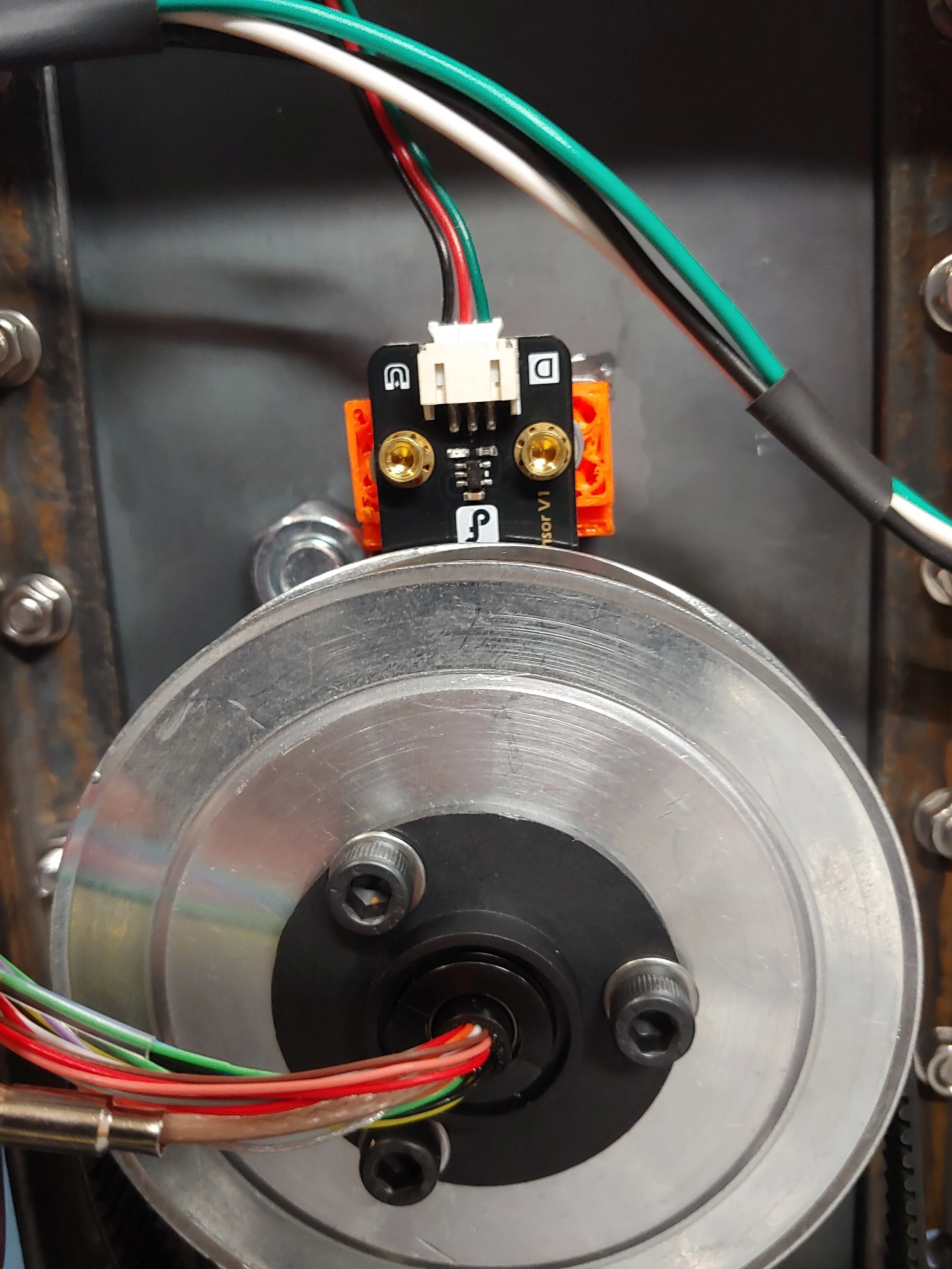Moving Head Projector Prototype (LX-1)
Role: Product Design, Project Management , Fabrication
Team members:
Anthony Duen
Matt Peterson
Brady Viledsen
Project Overview:
Moving head lights are used extensively in the entertainment industry to light concerts, special events, film sets, and just about anything that an audience can see. Instead of traditional theater lighting fixtures, these “intelligent” lights have the ability to change colour, beam shape, brightness, and their pointing direction with the aid of pan/tilt mechanism. The problem arises in the mechanical complexity of these devices. Every optical parameter requires one or more stepper motors to control various optical modifiers. Some lights have 20+ stepper motors just to control the light beam and are still very limited in what they can do. Our solution was to replace the “head” with a high brightness DLP projector and an integrated media server to control the beam output. In this way we could mimic the output of current fixtures as well as add infinite future possibilities for lighting designers. Any image, video, or motion graphic can be played back and various graphics can be generated/controlled in real time.
Key Features:
12,000 Lumen Panasonic DLP Projector, laser light source.
Closed loop servo control
Continuous rotation on both axes
Custom media server software made in TouchDesigner
Integrated windows PC media server
5” Touchscreen
Fully compatible with the ARTNET DMX Protocol












Hardware Overview:
MCU/Processor: 2X Teensy 3.6 Development Boards, 1x Raspberry Pi
Motors and Motor Control: 2x( 9225-90KV Turnigy BLDC, Odrive controller board, AMT102-V encoder, hall effect sensor)
Console Control: ARTNET DMX interface through an RJ45 port
Slip Rings: 2x (MOFLON 16 channel + HD-SDI slip ring)
PC: i5, 16gb Ram, Quadro P400
Mechanical: Frame made from 20/20 Aluminum extrusions, custom machined aluminum hubs, custom plates out of aluminum and steel
Projector: Panasonic PT-RZ120
Power Consumption (MAX): 1700W
Control System Overview:
Incoming ARTNET data, an industry standard for lighting control, is distributed using a network switch to the onboard PC, RasPi and Teensies. The PC generates all of the imagery that the projector displays, the RasPi controls the touchscreen and high-level system functions while the Teensies interface with the sensors and motor controllers. We have decided to get rid of the RasPi in the next version as it just adds complexity and it’s duties can be offloaded to the MCU’s and PC.
Github link below:
https://github.com/carbon-video-systems
Testing:
This level of mechanical design was definitely a challenge for me and so much was learned through testing. I discovered SolidWorks motion simulation pretty late in the game so a lot of the early motor tests were just finding out we needed way more power. The projector payload is 55lbs, not perfectly balanced and therefore requires a lot of power to move quickly. Frame rigidity was also a problem during testing but was largely resolved by adding more supports. Testing of the media server software is ongoing and is fairly streamlined using ARTNET generated by a lighting application on the same PC.
Suppliers:
Digikey
PJRC
ODrive Robotics
HobbyKing
Lee’s Electronics